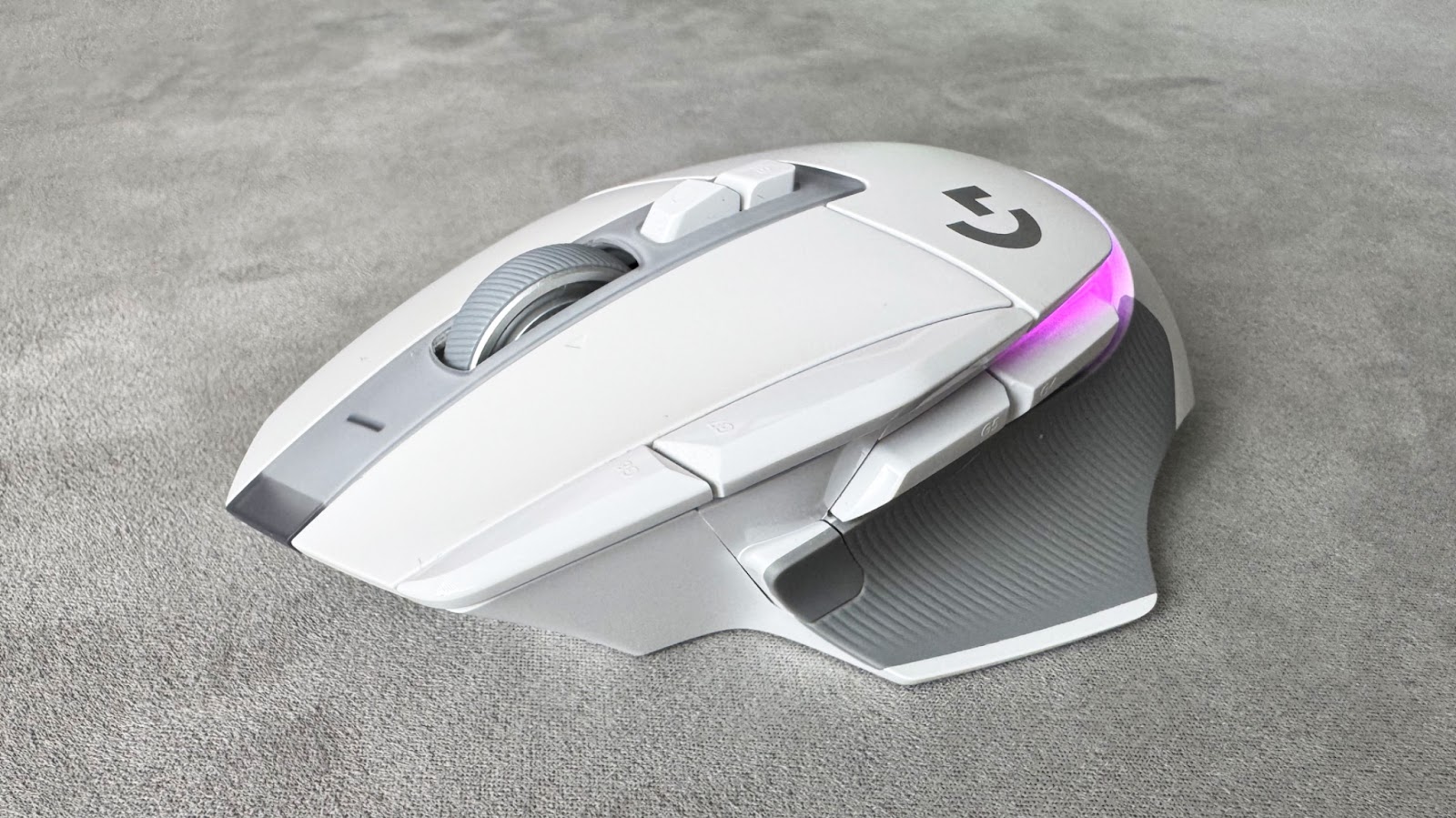If you’re shopping for a new mouse, the number of choices can feel overwhelming. One label you’ll often come across is “gaming mouse” — but what exactly does that mean? And do you really need a special mouse for gaming compared to everyday use?
In this guide, we’ll break down the key features of a mouse, explain what they actually do in real-world use, and take a closer look at what sets a gaming mouse apart.
Gaming Mouse Basics

At its core, a gaming mouse functions the same as any other — it moves the cursor and clicks. The difference is that gaming mice often push hardware specs further and add extra features on top. They come in a wide range of designs, with some focused on speed and performance, and others prioritizing expanded functionality.
Traditionally, gaming mice have more sculpted shapes that prioritize ergonomics and comfort, especially for long play sessions. Sizing matters here. The type of grip you use—palm or claw (also called fingertip) — can affect whether a mouse suits you. Larger gaming mice with a more pronounced body are ideal for palm grips, while smaller, lower-profile mice tend to work better for claw grips.
Gaming mice also tend to offer more customization. Many models include additional buttons and wheels that can be mapped to in-game functions.
For example, MMORPG-focused mice might feature 15 or more programmable side buttons, which let you bind keyboard shortcuts or macro sequences within easy reach. Most major brands also provide software that automatically changes your button mappings depending on the game you’re playing, offering a high level of flexibility.
On the other hand, pro or esports mice are designed for speed and precision. These models usually strip out nonessential features to minimize weight and maximize performance. They’re generally smaller and can weigh as little as 50 grams. Many of them are wired rather than wireless to avoid interference and improve responsiveness.
Whether you go for an MMO-style mouse or an esports-focused one, gaming mice typically give you greater control over how they behave. You can fine-tune their performance to your preferences and adjust settings on the fly.
Two key metrics are polling rate and DPI, both of which are often more adjustable and available in higher ranges on gaming mice. While most models offer software for customization, many also include physical buttons for changing settings mid-game.
Gaming Mouse Benefits
![[MK] Drafts: What is a Gaming Mouse](https://www.market.com/wp-content/uploads/2025/08/-mk-drafts-what-is-a-gaming-mouse-3.png)
So we’ve looked at what sets a gaming mouse apart from a standard one, but now you might be thinking about how these differences actually help in practice. Let’s break it down.
Customization and Flexibility
A traditional mouse is made to be simple and broadly compatible — it works the same way across various tasks without much setup. A gaming mouse, however, can be tailored to the individual.
Different users might use the same mouse in totally different ways with custom button layouts and sensitivity preferences. Settings can even be tweaked mid-game for the best experience.
For example, in a first-person shooter, you might run a high sensitivity for quick movements, then instantly switch to lower sensitivity when sniping.
Improved Quality of Life Through Programmable Buttons
Extra buttons can make in-game actions more intuitive and accessible. You can bind frequently used actions — like opening your inventory — to a thumb button, avoiding the need to reach across the keyboard.
This allows muscle memory to kick in and keeps your hands where they’re needed most.
Superior Performance for Serious Gaming
Gaming mice are built specifically for high-performance scenarios, not general office work. They offer a wider range of sensitivities and faster response times. In competitive play, every millisecond matters—your mouse needs to respond instantly.
Using an office mouse in a fast-paced battle is like trying to drive an F1 car with a golf cart steering wheel.
Productivity Boost Outside of Gaming
The same features that help in games can also streamline everyday PC use. Program buttons for frequent actions in tools like spreadsheets or browsers. Many gaming mice can detect which app is active and switch profiles automatically. With a bit of setup, your workflow can become faster and more efficient.
What is The Difference Between a Gaming Mouse and A Normal Mouse?
![[MK] Drafts: What is a Gaming Mouse](https://www.market.com/wp-content/uploads/2025/08/-mk-drafts-what-is-a-gaming-mouse-4.png)
Let’s put a gaming mouse and a normal mouse head to head in a few quick-fire rounds to highlight the differences and explain a few common terms.
Aesthetics
Gaming mice tend to look far funkier than their standard counterparts. This comes down to personal preference, but expect more modern, angular designs and a broader choice of colors. RGB lighting is common, and in many cases, fully programmable. Normal mice usually stick with minimalist or utilitarian styling.
Sensors
A gaming mouse is likely to include a higher-quality sensor than a typical office mouse. We’ll get into specific stats below, but at the hardware level, gaming mice offer more precise tracking.
Consider the surface you’ll be using: even good optical sensors can struggle on certain materials like glass. Investing in a decent desk or mouse mat can help ensure consistent performance.
DPI (Dots Per Inch)
DPI measures how much data the sensor collects for each inch the mouse moves—higher DPI means higher sensitivity and finer tracking.
Normal mice usually have a fixed DPI around 800 and rarely allow adjustment. Gaming mice can reach 20,000–30,000 DPI, though most users stick to 1,200–2,000 DPI.
Polling Rate
This is how often your mouse reports its position to your PC, measured in Hz. A standard office mouse typically polls at 125Hz, meaning data is sent every 8ms.
Gaming mice often poll at 1,000Hz, or every 1ms — crucial for reducing input lag in fast-paced games. While 125Hz is fine for spreadsheets or browsing, it’s noticeably slower in competitive gameplay.
Connection
This can be more personal preference, but it does impact performance. Standard wireless mice usually rely on Bluetooth. It’s fine for general productivity but doesn’t handle high refresh rates well.
Gaming mice often use a dedicated USB dongle with proprietary wireless tech that’s more responsive and stable. Many pro gamers skip wireless altogether and stick with wired mice to eliminate any risk of lag or interference.
Customization
Gaming mice generally offer more customization across the board. Extra buttons can be mapped to in-game actions or macro sequences. Sensitivity and responsiveness can be fine-tuned to suit your preferences.
While premium office mice are starting to include programmable buttons and shortcuts, these features are still more common and more powerful in gaming-focused models.
Are Gaming Mice Worth it?
Deciding whether a gaming mouse is worth it can depend on a lot of factors. With so many options covering different features and price points, the answer for most people is probably yes.
The key is to figure out your needs and budget, then choose a mouse that fits both. Start by thinking about what features matter most:
- What types of games do you play most often?
- Do you need high accuracy and fast responsiveness?
- Would extra buttons within easy reach be useful?
- Do you care about RGB lighting or prefer a lightweight build?
- How often will you use the mouse for non-gaming tasks?
Once you’ve answered these questions, set a realistic budget. Gaming mice are generally more expensive than regular ones, especially if you’re looking at premium brands. But by focusing on the features that actually matter to you, it’s easier to avoid overpaying for extras you won’t use.
It’s also worth noting that a gaming mouse isn’t just for gaming. If you do creative work or editing, those extra programmable buttons can simplify repetitive tasks. Even for general office work, a gaming mouse can be helpful. I use one for admin and writing because the larger shape fits my palm grip well, and the side buttons make it easier to switch between tabs and windows.



